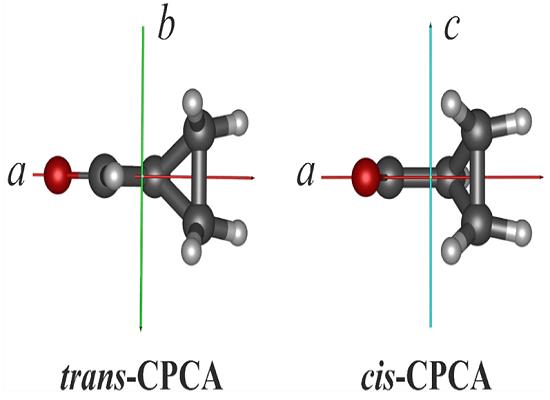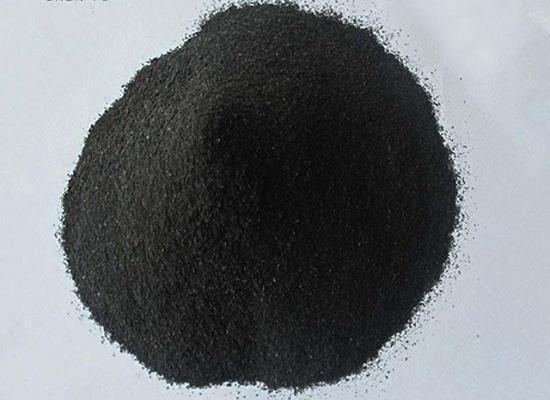Cyclopropanecarboxaldehyde: properties and applications in astrophysics
General Description
Cyclopropanecarboxaldehyde (CPCA) is a chemical compound with two primary conformers, syn and anti. The relative stability between these conformers has been studied using rotational spectra analysis and computational techniques. CPCA, derived from cyclopropane, has the potential for detection through its rotational spectrum, unlike cyclopropane itself. This makes it valuable in the identification of organic molecules in the interstellar medium (ISM). The concentration of the trans isomer in the gas phase was found to be approximately 1.2 times higher than that of the cis isomer. The obtained rotational parameters were used to search for Cyclopropanecarboxaldehyde in the molecular clouds Orion KL and Sgr B2(N), aiming to detect and characterize its presence using spectral surveys. This study contributes essential spectroscopic data and theoretical insights for the detection and understanding of organic molecules in the interstellar medium.

Figure 1. Molecular structures for the trans and cis conformers of cyclopropanecarboxaldehyde
Properties
Cyclopropanecarboxaldehyde is a chemical compound that exhibits two primary conformers, syn and anti. These conformers are known for their close energy proximity, and the stability order between them is subject to change based on the level of theory or experimental techniques used for determination. While the anti conformer is predicted to be more stable in condensed states, its relative stability in the gas phase remains uncertain. To further understand this issue, researchers have investigated the rotational spectrum of both syn- and anti-CPCA in the frequency range of 246–294 GHz. This study was complemented by computational analysis of both conformers. By analyzing the rotational transitions and incorporating data from literature, accurate rotational parameters and high-order centrifugal distortion constants were determined. The vibrational frequencies computed with precision were then used to reanalyze the infrared spectrum of both conformers. Although state-of-the-art computations suggest that the anti conformer is more stable, estimates from rotational spectra analysis are controversial due to variables like the zero-point vibrational correction. CPCA, derived from cyclopropane, presents potential for detection through its rotational spectrum, unlike cyclopropane itself, which lacks a dipole moment. Understanding the relative abundances of Cyclopropanecarboxaldehyde isomers in the gas phase is of significant astrochemical importance, particularly considering that five out of seven aldehydes detected in the interstellar medium are alkyl derivatives of formaldehyde. Further research and accurate spectral modeling are essential for astronomical detection and to unravel the astrochemical implications of Cyclopropanecarboxaldehyde. 1
Applications in astrophysics
Cyclopropanecarboxaldehyde has potential applications in astrophysics, particularly in the detection and identification of organic molecules in the interstellar medium (ISM). The molecule contains a formyl group (HCO), which is a common feature among several observed ISM species. However, there is a need for high-resolution spectroscopic data to facilitate the detection of these molecules. To address this, researchers conducted rotational spectrum measurements of cyclopropanecarboxaldehyde using the GACELA spectrometer at the Yebes Observatory. The frequency ranges of 31.5-50 GHz and 72-116.5 GHz were studied. The experimental data was supported by theoretical calculations, enabling the identification of vibrational excited states. The analysis of the rotational spectrum provided accurate rotational parameters for both cis and trans isomers of cyclopropanecarboxaldehyde, allowing reliable predictions up to 300 GHz. Additionally, multiple vibrationally excited states were identified for each isomer, including fundamental modes and combination states. It was found that the concentration of the trans isomer in the gas phase is approximately 1.2 times higher than that of the cis isomer. The obtained rotational parameters were then used to search for cyclopropanecarboxaldehyde in the warm molecular clouds Orion KL and Sgr B2(N) using spectral surveys captured by ALMA and IRAM 30 m telescopes, respectively. These observations at 1 mm and 3 mm wavelengths aimed to detect and characterize the presence of cyclopropanecarboxaldehyde in these astrophysical environments. Overall, the study provides essential spectroscopic data and theoretical insights into cyclopropanecarboxaldehyde, facilitating its potential application in the detection and understanding of organic molecules in the interstellar medium. 2
Reference
1. Hudson RL, Coleman FM. Solid-State Isomerization and Infrared Band Strengths of Two Conformational Isomers of Cyclopropanecarboxaldehyde, A Candidate Interstellar Molecule. ACS Earth Space Chem, 2019, 3(7):1182-1188.
2. Cabezas C, Neeman EM, Tercero B, Bermúdez C, Cernicharo J. Comprehensive rotational study and astronomical search for cyclopropanecarboxaldehyde. Astron Astrophys, 2021, 645:A75.
Related articles And Qustion
See also
Lastest Price from Cyclopropanecarboxaldehyde manufacturers

US $0.00-0.00/KG2025-04-21
- CAS:
- 1489-69-6
- Min. Order:
- 1KG
- Purity:
- 99%
- Supply Ability:
- 20 mt

US $15.00-10.00/KG2021-07-13
- CAS:
- 1489-69-6
- Min. Order:
- 1KG
- Purity:
- 99%+ HPLC
- Supply Ability:
- Monthly supply of 1 ton



